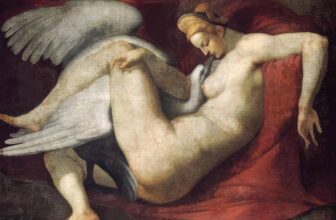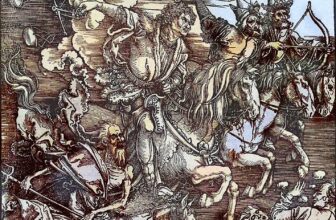What are The Most Famous Paintings of Paolo Uccello
Shopping Ads: Invest in Hidden Masterpiece: Rare Antique Oil Paintings For Sale. Limited Originals Available 💰😊 Are you looking for authentic hidden masterpiece? Explore old master antique oil paintings from the Renaissance and Baroque eras. From 16th-century portraits to 18th-century landscapes. Authenticity guaranteed, Old Master antique oil paintings for sale. Shop Now! 🎨 Renaissance And Baroque Art Old Master Portrait Paintings Landscape Antique PaintingsIn the golden dawn of the Italian Renaissance, a time when art flourished alongside science and humanism, one painter stood apart, not just for his style, but for his obsessive curiosity. His name was Paolo Uccello, and though his fame may not rival the likes of Leonardo da Vinci or Michelangelo today, in his time, he was a visionary, a master of perspective, and a painter who transformed flat surfaces into three-dimensional marvels.
Born in Florence in 1397, Paolo Uccello lived during an era of innovation. Artists were breaking away from medieval constraints, and the city of Florence, with its banks, palaces, and intellectual ferment, was a crucible for new ideas. Yet Uccello was different. While others painted religious scenes and portraits that prioritized realism and emotion, Paolo Uccello was obsessed with something far more abstract and mathematical: linear perspective.
The Story of Paolo Uccello: A Life in Shadows and Geometry
Paolo Uccello, born Paolo di Dono, earned his nickname, “Uccello” meaning “bird” in Italian, because of his early fascination with painting birds and animals. He trained under Lorenzo Ghiberti, the famed sculptor of the bronze doors of Florence’s Baptistery, a place teeming with artistic ambition.
Under Ghiberti, Uccello absorbed the intricacies of Gothic art but soon diverged from its ornamental path. What fascinated him wasn’t mere decoration but how to depict space itself. The idea that a two-dimensional surface could mimic depth through mathematical precision enthralled him. He would spend nights calculating vanishing points and lines, famously ignoring his wife when she asked him to come to bed, saying, “Oh, what a sweet thing this perspective is!”
This obsession, though admired by a few, isolated him from the mainstream. Giorgio Vasari, the Renaissance biographer, wrote of Uccello with a mix of admiration and sadness, describing him as an eccentric genius who was “more solitary than is natural for a man.”
What Is Paolo Uccello Known For?
Uccello is best known for his pioneering work in linear perspective, an artistic technique that creates the illusion of depth on a flat surface. Before the Renaissance, most European art appeared flat and symbolic. Uccello, among the first to apply scientific rules to art, made radical changes to how space and dimension were depicted.
His mastery of geometry and foreshortening allowed him to create compositions that pulled the viewer into the scene. Instead of simple backgrounds, he layered his works with receding lines, careful spatial relationships, and architectural precision.
But Uccello wasn’t just a technician, he was a visionary storyteller. His works often straddle the line between the mystical and the mathematical, the dramatic and the serene. His figures are caught mid-action, his battle scenes a blend of chaos and choreography, and his compositions often look like frozen theater sets, organized by invisible grids of perfect geometry.
The Most Famous Paintings of Paolo Uccello
While Uccello’s body of work is relatively small compared to other Renaissance masters, several of his paintings have become iconic:
1. The Battle of San Romano (c. 1438–1440)
Perhaps Uccello’s most famous and celebrated work, this series of three large panels captures the Battle of San Romano, fought in 1432 between Florence and Siena. What makes these paintings remarkable isn’t just the subject, but how Uccello rendered chaos with control.
Spears and lances lie across the ground in mathematically precise alignment. Horses rear up dramatically, frozen in geometric motion. Soldiers in bright armor are not merely fighting; they are dancing to the rhythm of perspective.
The three panels are now separated:
One is at the National Gallery in London
Another in the Louvre in Paris
The last in the Uffizi Gallery in Florence
2. Saint George and the Dragon (c. 1470)
This painting tells the legendary story of Saint George slaying the dragon, but Uccello’s version is haunting. The dragon appears tamed, the princess is calm, and the background swirls with eerie, stylized vegetation. It feels almost surreal.
What stands out is the meticulous use of perspective, especially in the cave behind the dragon, pulling the viewer’s eye inward. It resides in the National Gallery in London, and is considered a masterpiece of early narrative painting.
3. The Hunt in the Forest (c. 1470)
Held at the Ashmolean Museum in Oxford, this painting is another perspective tour de force. Riders and hounds disappear into a dense forest, their forms receding perfectly into the dark canopy. The vanishing point draws the viewer into the painting’s depth, illustrating Uccello’s unmatched command of spatial illusion.
4. The Flood and the Waters Receding (from the Green Cloister frescoes, Santa Maria Novella)
These frescoes depict biblical scenes with bold architecture and striking color contrasts. They demonstrate Uccello’s experimental use of light, space, and color, particularly in how he represents divine wrath and natural disaster.
How Many Paintings Does Paolo Uccello Have?
Because Uccello lived during the early Renaissance, before systematic cataloging of artists’ works, his exact number of paintings is difficult to determine. Art historians typically attribute around 20–30 paintings and frescoes to him, with varying degrees of certainty. Some works have been lost or damaged, and others debated as collaborations or studio pieces.
Major museums and religious institutions across Europe hold his surviving works. These include altarpieces, frescoes, battle scenes, and religious narratives.
What Is Paolo Uccello’s Most Expensive Painting?
Unlike some other Renaissance artists whose paintings have fetched astronomical prices at auctions, Paolo Uccello’s major works are held in public collections and are rarely, if ever, sold.
Therefore, it’s challenging to pinpoint a definitive “most expensive” painting. However, if placed on the open market today, experts estimate that “The Battle of San Romano” panels would command prices well into the hundreds of millions of dollars due to their historical importance, size, and revolutionary technique.
An indirect valuation comes from their insurance value and status within their respective institutions. The panel in the Louvre, for example, is considered one of the museum’s most prized Renaissance works. These are not just artworks, they’re national treasures.
Where Are Paolo Uccello’s Paintings Located Today?
Paolo Uccello’s works are scattered across some of the most prestigious museums in Europe. Here are the key locations where his paintings can be found:
Italy:
Uffizi Gallery, Florence – “Battle of San Romano” (panel)
Santa Maria Novella, Florence – “Green Cloister” frescoes
Museo di San Martino, Naples – “Adoration of the Magi”
Museo dell’Opera del Duomo, Florence – “Monument to Sir John Hawkwood” fresco
United Kingdom:
National Gallery, London – “Saint George and the Dragon,” “The Battle of San Romano” panel
France:
Louvre Museum, Paris – One of the “Battle of San Romano” panels
Germany:
Kunsthaus Zurich – Portraits and religious works attributed to his circle
United States:
While Uccello’s major works are concentrated in Europe, some museums in the U.S. hold drawings or minor attributions. Most full-scale paintings remain in Europe due to their cultural significance and ownership laws.
What Is Paolo Uccello’s Legacy?
Paolo Uccello’s name might not echo through art history with the same volume as Leonardo or Michelangelo, but his contributions laid the groundwork for the High Renaissance.
1. The Father of Perspective in Painting
Uccello wasn’t the first to experiment with perspective, but he was the first to devote his life to mastering and applying it across his entire body of work. His innovations deeply influenced artists like Piero della Francesca, who further refined mathematical perspective, and later even Leonardo da Vinci.
2. Bridging Gothic and Renaissance Art
Uccello’s art straddles two worlds: the decorative style of Gothic painting and the logical rigor of the Renaissance. His work helped usher in the transition from one era to the next.
3. Inspiration for Modernists and Surrealists
In the 20th century, Uccello was rediscovered by modernists. Artists like Giorgio de Chirico and Fernand Léger admired his dreamlike use of space and stylized forms. Some even consider him a precursor to Surrealism, due to his otherworldly compositions and still, almost robotic figures.
4. Cultural Symbol of Florence
Today, Uccello is celebrated in Florence as a native son who helped shape the visual language of the Renaissance. His frescoes in Santa Maria Novella continue to attract scholars, artists, and tourists.
The Alchemist of Space
Paolo Uccello may have lived in the shadows of more famous peers, but his legacy is profound. In an age dominated by religious iconography and humanist philosophy, Uccello chose a quieter, more scientific revolution: the manipulation of space.
He turned flat surfaces into windows, illusions into reality, and chaos into ordered vision. Each lance, tree, or stone in his paintings isn’t just a detail, it’s part of a grand spatial symphony. His life, marked by solitude and obsessive inquiry, reminds us that true genius often lies not in loud proclamations, but in the quiet pursuit of something deeper.
In the geometry of lances strewn across a battlefield, in the depth of a dark forest where hunters vanish into shadow, Paolo Uccello painted not just scenes, but the very structure of the world itself.




